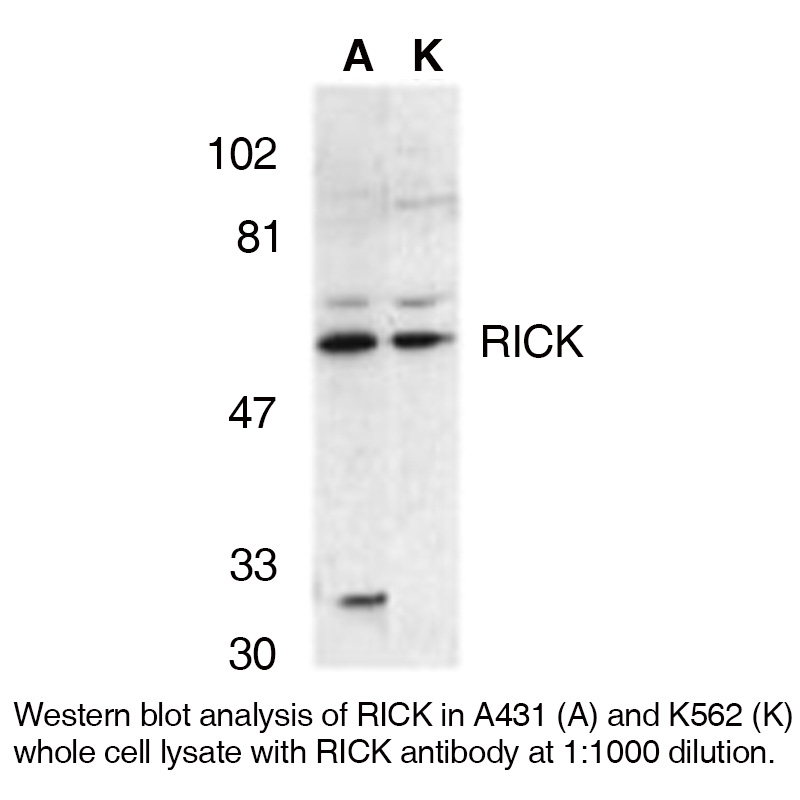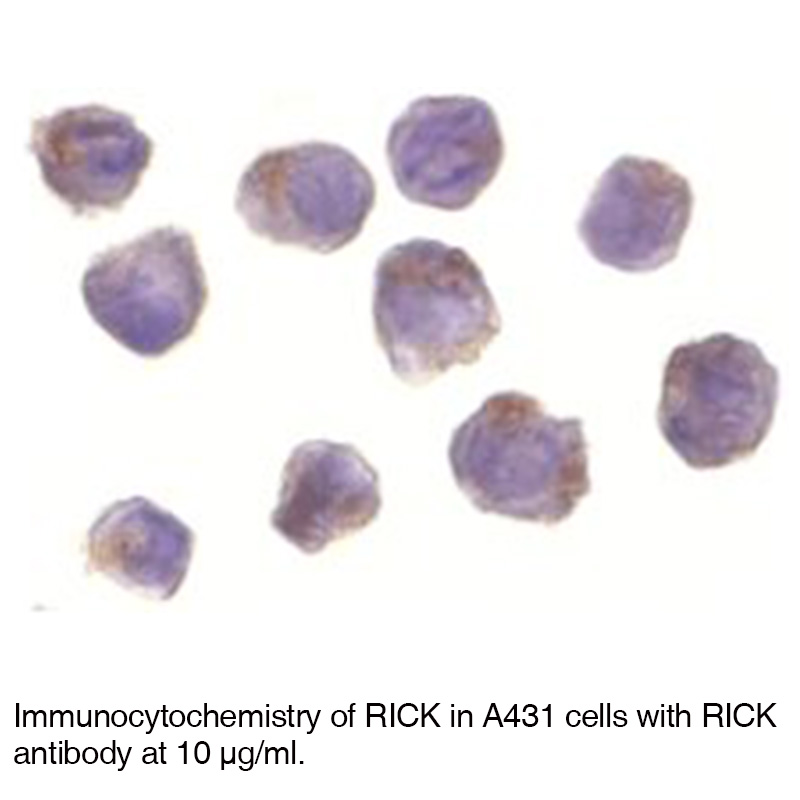Anti-Human RICK (NT)
Data
- -
- -
Antibody DetailsProduct DetailsReactive Species Human Host Species Rabbit Immunogen PN:R1007 Product Concentration 0.5 mg/ml Formulation This polyclonal antibody is formulated in phosphate buffered saline (PBS) pH 7.4 containing 0.02% sodium azide as a preservative. Storage and Handling This polyclonal antibody is stable for at least one week when stored at 2-8°C. For long term storage, aliquot in working volumes without diluting and store at –20°C in a manual defrost freezer. Avoid Repeated Freeze Thaw Cycles. Country of Origin USA Shipping Next Day Ambient RRIDAB_2831660 Each investigator should determine their own optimal working dilution for specific applications. See directions on lot specific datasheets, as information may periodically change. DescriptionDescriptionSpecificity Rabbit Anti-Human RICK recognizes an epitope near the N-terminus of Human, Mouse and Rat RICK. This polyclonal antibody was purified using affinity chromatography. Background Apoptosis is mediated by death domain (DD) and/or caspase recruitment domain (CARD) containing molecules and a caspase family of proteases. DD-containing serine/threonine kinase RIP regulates Fas-induced apoptosis. A novel CARD-containing serine/threonine kinase was recently identified and designated RICK/RIP2/CARDIAK for RIP-like interacting CLARP kinase, receptor interacting protein-2, and CARD-containing ICE associated kinase, respectively.1-3 RICK contains an N-terminal kinase catalytic domain and a C-terminal CARD domain. Overexpression of RICK induced apoptosis and activation of NF-κB and JNK. RICK interacts with members of the TRAF family, CLARP and caspase-1. Thus, RICK represents a novel kinase that regulates TNF and Fas induced-apoptosis and that is involved in the generation of proinflammatory cytokine IL-1b. The messenger RNA of RICK is expressed in multiple human tissues. PubMed References & Citations1. Inohara, N. et al. (1998) J. Biol. Chem. 273:12996 2. McCarthy, JV. et al. J. Biol. Chem. 273:16968 3. Thome, M. et al. (1998) Curr. Biol. 8:885 Technical ProtocolsCertificate of Analysis |
Related Products
- -
- -
Prod No. | Description |
|---|---|
R1000 | |
R999 | |
R1006 | |
R1007 |




